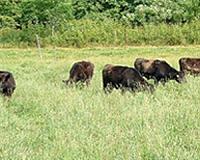 |
Washington DC (SPX) May 04, 2011 Many people reach toward the back of the fresh-produce shelf to find the freshest salad greens with the latest expiration dates. But a study led by U.S. Department of Agriculture (USDA) scientists may prompt consumers to instead look for packages that receive the greatest exposure to light--usually those found closest to the front. The study was led by postharvest plant physiologist Gene Lester while at the Agricultural Research Service (ARS) Crop Quality and Fruit Insects Research Unit in Weslaco, Texas. ARS is USDA's chief intramural scientific research agency. Lester and colleagues Donald Makus and Mark Hodges found that spinach leaves exposed to continuous light during storage were, overall, more nutritionally dense than leaves exposed to continuous dark. Lester now works at the ARS Food Quality Laboratory in Beltsville, Md. For the study, the researchers exposed spinach leaves to light similar to the 24-hour artificial fluorescent light received by spinach in packages located at the front of the display case. A second group was enclosed in two-layer-thick, brown-grocery-bag paper to represent the "dark treatment." Both experimental groups were housed in market-type, light-transmissible polymer tubs with snap-tight lids and were kept in walk-in storage chambers at 4 degrees Celsius, the same temperature at which markets currently display packaged spinach. The light reaction of photosynthesis is not temperature-dependent and can occur at 4 degrees C in the right type of light. The researchers found that the continuous light affected the leaves' photosynthetic system-resulting in a significant increase in levels of carotenoids and vitamins C, E, K, and B9, or folate. While the simulated retail light conditions actually helped the stored leaves gain in content of several human-healthy vitamins, some wilting occurred after three days of storage in flat-leaf spinach, but not crinkled-leaf types. Results from this work were published in the Journal of Agricultural and Food Chemistry.
Share This Article With Planet Earth
Related Links U.S. Department of Agriculture (USDA) Farming Today - Suppliers and Technology
 Study urges different grazing practices
Study urges different grazing practicesNew York (UPI) May 3, 2011 Rotational grazing of cattle on Brazil's native pasturelands could have benefits for both cattle and wildlife, U.S. researchers say. A study conducted by the Wildlife Conservation Society says grazing cattle in small areas for shorter periods before moving onto other pastures results in a greater forage base and larger, more valuable cattle. The practice also reduces incentives for defo ... read more |
|
| The content herein, unless otherwise known to be public domain, are Copyright 1995-2010 - SpaceDaily. AFP and UPI Wire Stories are copyright Agence France-Presse and United Press International. ESA Portal Reports are copyright European Space Agency. All NASA sourced material is public domain. Additional copyrights may apply in whole or part to other bona fide parties. Advertising does not imply endorsement,agreement or approval of any opinions, statements or information provided by SpaceDaily on any Web page published or hosted by SpaceDaily. Privacy Statement |